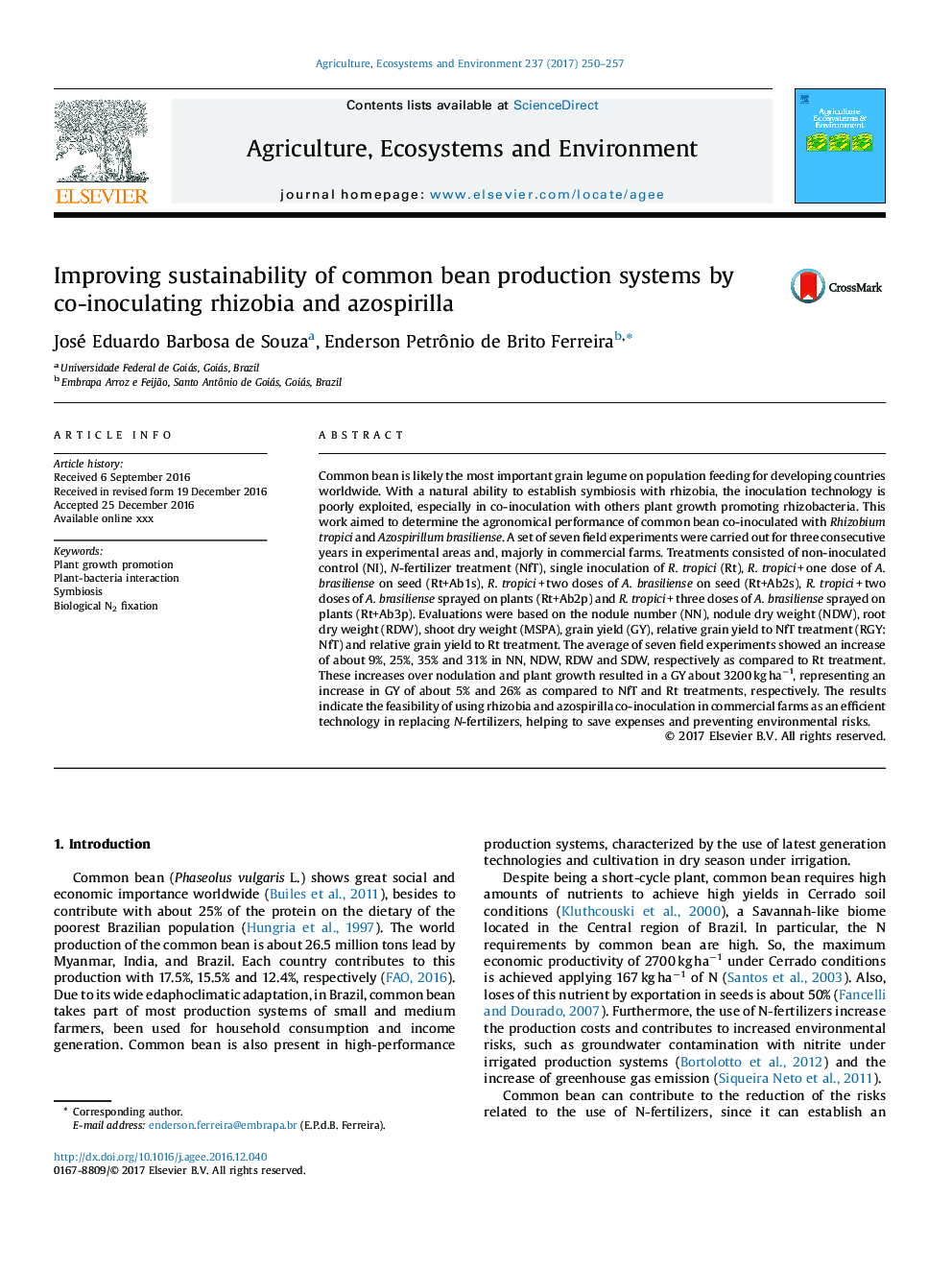| Article ID | Journal | Published Year | Pages | File Type |
|---|---|---|---|---|
| 5538238 | Agriculture, Ecosystems & Environment | 2017 | 8 Pages |
Abstract
Common bean is likely the most important grain legume on population feeding for developing countries worldwide. With a natural ability to establish symbiosis with rhizobia, the inoculation technology is poorly exploited, especially in co-inoculation with others plant growth promoting rhizobacteria. This work aimed to determine the agronomical performance of common bean co-inoculated with Rhizobium tropici and Azospirillum brasiliense. A set of seven field experiments were carried out for three consecutive years in experimental areas and, majorly in commercial farms. Treatments consisted of non-inoculated control (NI), N-fertilizer treatment (NfT), single inoculation of R. tropici (Rt), R. tropici + one dose of A. brasiliense on seed (Rt+Ab1s), R. tropici + two doses of A. brasiliense on seed (Rt+Ab2s), R. tropici + two doses of A. brasiliense sprayed on plants (Rt+Ab2p) and R. tropici + three doses of A. brasiliense sprayed on plants (Rt+Ab3p). Evaluations were based on the nodule number (NN), nodule dry weight (NDW), root dry weight (RDW), shoot dry weight (MSPA), grain yield (GY), relative grain yield to NfT treatment (RGY:NfT) and relative grain yield to Rt treatment. The average of seven field experiments showed an increase of about 9%, 25%, 35% and 31% in NN, NDW, RDW and SDW, respectively as compared to Rt treatment. These increases over nodulation and plant growth resulted in a GY about 3200 kg haâ1, representing an increase in GY of about 5% and 26% as compared to NfT and Rt treatments, respectively. The results indicate the feasibility of using rhizobia and azospirilla co-inoculation in commercial farms as an efficient technology in replacing N-fertilizers, helping to save expenses and preventing environmental risks.
Related Topics
Life Sciences
Agricultural and Biological Sciences
Agronomy and Crop Science
Authors
José Eduardo Barbosa de Souza, Enderson Petrônio de Brito Ferreira,
